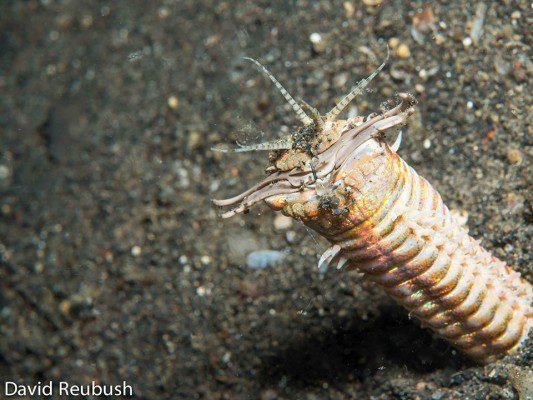
So, what exactly are Bobbit worms? Well, they belong to the Eunicidae family and can be found in warm waters around the world, often in coral reefs or sandy environments. They can grow several feet long and are famous for their sharp jaws and impressive hunting abilities. Let’s dive into the intriguing world of Bobbit worms and explore their nocturnal feeding patterns to understand what makes them such remarkable creatures.
What Are Bobbit Worms?
Bobbit worms are marine polychaete worms known scientifically as *Eunice aphroditois*. These creatures are typically found in tropical and subtropical waters, hiding in burrows they create in the seabed. Their vibrant colors—ranging from green to deep red—help them blend into their surroundings, making them even more effective predators.
These worms can reach lengths of up to 10 feet, although they are often much shorter. The most striking feature of a Bobbit worm is its head, which has long, segmented antennae that sense vibrations in the water. Picture a creature that looks like a blend of a worm and a mythical sea monster— that’s the Bobbit worm for you!
Physical Characteristics
Let’s talk about how Bobbit worms look and the unique features that help them survive. Their long, slender bodies are segmented with multiple bristle-like structures, called chaetae, that aid in movement and grasping their prey. The head is equipped with sharp, serrated jaws, which can snap shut with lightning speed.
When a Bobbit worm decides to feed, it extends its head out of its burrow, often camouflaged against the ocean floor. This capability makes them formidable hunters. They primarily feed on fish and crustaceans, relying on their ability to remain hidden until the perfect moment to strike. It’s a bit like watching a magician at work—one moment they’re invisible, and in the blink of an eye, they’ve caught a meal.
Nocturnal Feeding Patterns
You might be curious about when Bobbit worms do the most hunting. Here’s the thing: they’re primarily nocturnal feeders, which means they hunt mostly at night. This behavior is quite common among many marine creatures. The darkness provides cover, making it easier for the worms to ambush unsuspecting prey.
At night, the water becomes a bustling environment of activity. Various fish, attracted by the moonlight, swim near the seafloor, making them the perfect target for a hungry Bobbit worm. By utilizing their keen senses, these worms can detect movement and vibrations in the water, allowing them to hunt efficiently without alerting their prey.
How Do Bobbit Worms Capture Their Prey?
Now, you might be wondering how exactly these creatures catch their meals. It’s quite a fascinating process! Bobbit worms are ambush predators. They’ll lie in wait, partially hidden in their burrows, and once a fish or crab comes too close, the worm launches itself out of the sand with incredible speed.
Their jaws snap shut with a force that can even take larger fish by surprise. Imagine a snake striking its prey—quick and decisive! Once they’ve caught their victim, the Bobbit worm will pull it back into its burrow, where it begins to consume the catch.
The Role of Light in Feeding Behavior
You may be surprised to learn that light plays a critical role in the feeding habits of Bobbit worms. As nocturnal feeders, they rely on the low-light conditions of night to hunt effectively. But there’s more to it: certain wavelengths of light can affect their hunting success.
Studies have shown that Bobbit worms tend to be more active during periods of dim light, like dawn and dusk, when their prey is also moving closer to the surface. They’ve adapted to time their feeding with the natural rhythms of the ocean, which is pretty clever when you think about it!
Challenges in the Wild
Like many sea creatures, Bobbit worms face a variety of challenges in their natural habitats. Changes in water temperature, pollution, and habitat destruction can all impact their food sources and living conditions. Not to mention, they’re not the only predators in the ocean; larger fish and other marine animals consider them a suitable meal.
Their nocturnal feeding habits offer some protection, but it’s not a foolproof solution. As they continue to dwell in their burrows, they must always be aware of their surroundings. The delicate balance of the ocean ecosystem means that every creature, including the elusive Bobbit worm, plays a vital role in maintaining health and stability in marine life.
Bobbit worms are truly fascinating creatures, with their unique feeding patterns and adaptations that make them successful hunters in the depths of the ocean. Their nocturnal lifestyle allows them to thrive, capitalizing on the cover of darkness to ambush their unsuspecting prey.
As we learn more about these incredible organisms, it’s clear that every creature in our oceans has a story worth telling. Understanding the Bobbit worm not only brings insight into its own life but also highlights the interconnected nature of marine ecosystems. So, whether you encounter one in a documentary or come across a photo online, remember: these critters are much more than just bizarre-looking worms; they’re essential players in the grand theatre of the underwater world.
